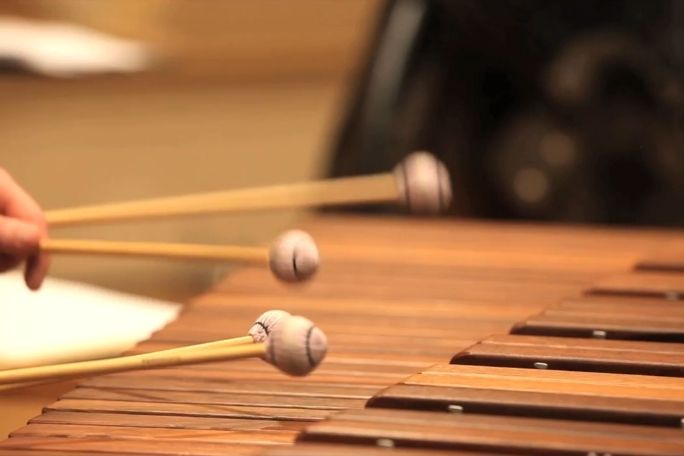Lesson summary
This lesson provides the opportunity for students to explore a wide variety of tone colours (timbres) across families of the orchestra. As an aside, different colour theories in music might also be explored. Students are inspired to start writing their own short 30 second attention grabbing piece of music to enter into the Fanfare Competition.
Learning intentions:
Students will...
- consider the tone colour differences between families of instruments
- consider the connection between visual colour and musical tone colour
- build their capacity to be creative and express ideas musically.
Success criteria:
Students can...
- describe the tone colour of specific instruments.
- choose instruments based on the feeling they create with their sound
Lesson guides and printables
Curriculum links
Select your curriculum from the options below.
Lesson details
Curriculum mapping
Australian Curriculum content descriptions:
Year 7 & 8 Music:
- Experiment with texture and timbre in sound sources using aural skills (ACAMUM092)
- Develop musical ideas, such as mood, by improvising, combining and manipulating the elements of music (ACAMUM093)
- Structure compositions by combining and manipulating the elements of music using notation (ACAMUM095)
Year 9 & 10 Music:
- Improvise and arrange music, using aural recognition of texture, dynamics and expression to manipulate the elements of music to explore personal style in composition and performance (ACAMUM099)
- Manipulate combinations of the elements of music in a range of styles, using technology and notation (ACAMUM100)
- Evaluate a range of music and compositions to inform and refine their own compositions and performances (ACAMUR104)
Syllabus Outcomes: MUS4.7, MUS4.8, MUS4.4, MUS4.4, MUS4.5, MUS4.6.
General capabilities: Critical and Creative Thinking
Relevant parts of Year 7 and 8 achievement standards: Students identify and analyse how the elements of music are used in different styles and apply this knowledge in their performances and compositions. Students manipulate the elements of music and stylistic conventions to compose music.
Relevant parts of the Year 9 & 10 achievement standards: Students analyse different scores and performances aurally and visually. They evaluate the use of elements of music and defining characteristics from different musical styles. They use their understanding of music making in different cultures, times and places to inform and shape their interpretations, performances and compositions.
Time needed: 60 minutes.
Level of teacher scaffolding: High – teacher requires musical knowledge to guide student ideas.
Digital technology opportunities: Use computers, smart phones, tablets to record musical ideas and motifs.
Resources required
- Device capable of presenting a video to the class
- Optional: Fanfare Competition DIY Student Toolkit
Skills
This lesson is designed to build students’ competencies in the following skills:
- Critical thinking
- Problem solving
- Communication
- Creativity
Additional info
This lesson is part of the Fanfare Competition unit. The unit is designed for students to build their aural and technical skills while exploring music as an art form through listening, composing and performing. Students are encouraged to apply their learning by planning and organising a composition for the Fanfare Competition.
The competition encourages young people aged 12‐21 years to write a new work to be recorded by the Australian Youth Orchestra and played in venues across Australia to replace the ‘cue bells’ for audiences to take their seats. It is a wonderful way to showcase young artists and musicians, and encourage creativity in young people.


Welcome back!
Don't have an account yet?
Log in with:
Create your free Cool.org account.
Many of our resources are free, with an option to upgrade to Cool+ for premium content.
Already have an account?
Sign up with:
By signing up you accept Cool.org's Terms and Conditions(Opens in new tab) and Privacy Policy(Opens in new tab).